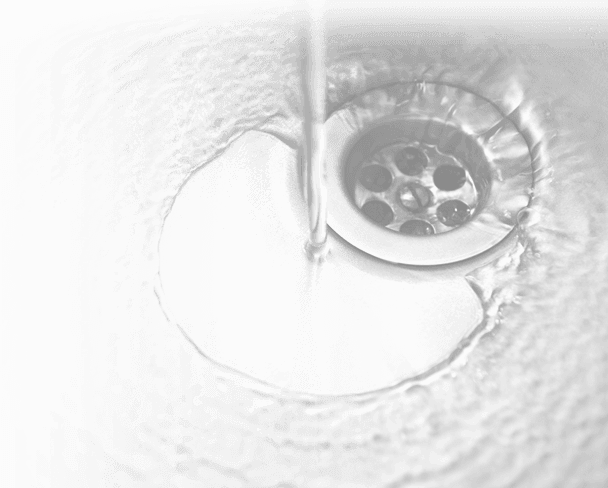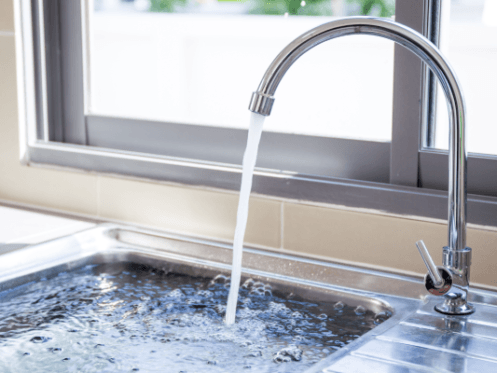How To Clear Blocked Kitchen Drain
A clogged kitchen sink is a common drainage issue that most homeowners encounter. This happens when food particles, soap fragments, and grease accumulate in the drain, restricting water flow. If you ignore this problem, the stagnant water may make your entire kitchen smell terrible. Fortunately, there are various ways in which you can clear a blocked kitchen drain. They include:
1. Use Boiling Water
The easiest way to unclog a kitchen drain is by using hot water. Start by removing the standing water from the clogged sink with a container. Pour hot water into the blocked sink gradually, and leave it to work on the clog for a few minutes. You can add a few drops of dish soap into the water.
The hot water will break down the clog, and the soap will help it slide down the drain. If the water won’t drain, it means that the clog is still there. Remove the water and repeat the process once more until the water begins to flow freely. If your drain line has PVC pipes, the boiling water can melt them, so it would be best that you consider an alternative method.
2. Check the Garbage Disposal
Garbage disposal is a chamber mounted below the sink to collect solid food wastes. If your sink has a clogged garbage disposal, it can affect drainage. First, switch off the disposal and use the flashlight to check the nature of the blockage. If there are food particles stuck between blades, manually turn them to break down the clog.
Once you turn on the disposal and it produces some humming sounds, the unit could be broken or jammed. Remove the standing water, unplug the disposal and use a pair of tongs to remove any loose debris. If the disposal is overheated, restart it by activating the reset switch at the bottom of the unit.
3. Use a Plunger
You can also try using a plunger to push the clog down the drain. Fill the sink with warm water to about quarterly or half full. If you have a double sink, seal the unclogged side with a stopper to prevent water from bubbling out to the other side.
Position the plunger over the drain and pump it vigorously up and down for about 30 seconds. Stop to see whether the water will flow down the drain. If not, continue plunging until you dislodge the entire clog. Run clean water down the drain to ensure that it’s clear.
4. Try Using the Plumber Snake
The best method to dislodge clogs stuck further down the drain is by using the plumber’s snake. This tool has a coiled spiral snake and a handle on one side. Open the cabinets beneath your sink, put a bucket to collect any water that may drain out. Disassemble the p-trap to access the stub pipe that goes deep into the walls.
Push the spiral end of the auger into the pipe on the wall until you feel an obstruction. Tighten the lock screw and begin to turn the handle clockwise. Keep pushing forward to dislodge all the debris. Whenever you feel like the plumber’s snake is stuck on something, turn it anticlockwise while pulling it out to dislodge the blockages. Repeat the process until the auger hits no more obstructions. Reattach the p-trap, and turn on the water to see if the sink drains properly.
5. Make Use of a Wire Coat Hanger
Those without a plumber’s snake can improvise one with a wire coat hanger. This method might not be as effective as using a snake, but it will help clear some clogs. Unwind and straighten the hanger into a long piece of wire using pliers. Create a small hook at the end of the wire and ensure that it’s narrow enough to fit in the drain.
Insert the hooked part of the wire into the drain and move it around to see if you can hold onto debris. When the tip of the wire hooks on an obstruction, try pulling it up through the drain. With this method, you might not be able to pull out the clog entirely with the first pull, so keep repeating the process. Do it carefully to avoid scratching your sink with the wire, and try not to push it too roughly to prevent pushing the blockage further into the drain. Once you feel like you have dislodged the entire clog, run hot water through the sink to test the drainage.
6. Break the Clog Down With Baking Soda and Vinegar
For this option, you will also begin by drawing out the water in the sink. Pour equal amounts of baking soda and vinegar down the drain and put the sink stopper into place. This is to allow the solution to bubble and foam on the clog and loosen it. Wait for about 15 minutes, remove the stopper, and pour hot water to remove any remaining clog. If the water is still draining slower, repeat the process once more.
7. Try Salt and Baking Soda
If you don’t have vinegar, you can still use baking soda and salt in the ratio of 2:1. Pour a cup of baking soda and ½ a cup of salt into the drain, then give it some time to work on the clog. Flush the mixture with hot water and observe the result. If this method fails to work in the initial trial, you can repeat it a few times.
8. Check the P-trap
The p-trap is the curved drain pipe below the sink. When clogged with food and grease, it can cause blockage and drainage issues. If the water still fails to drain properly, you might need to clean the p-trap. Place a container underneath the pipe to catch up the trapped water and debris once you open the p-trap. Loosen the connections to the pipe and then remove the p-trap.
Scrape off the sides of the p-trap to remove debris, grease, and any other residues, then rinse. Reattach the p-trap, turn on the faucet to see if the water runs as it should. This method is a bit messy, so you might need to put on gloves and an apron.
Are You Looking for Professional Drain Cleaning Services?
Having a clogged kitchen sink that won’t drain is a very frustrating situation. Luckily, there are various projects that you can attempt on your own to clear the clogs. If the DIY remedies fail to work, it’s a good idea that you seek professional help. While drain cleaning might seem like a simple task, sometimes, it can happen due to some underlying issues within the plumbing system. A professional has the right tools and experience to evaluate the cause and nature of the clog and remove it safely to prevent reoccurrence. Seeking professional help will also save you the hassle of dealing with the nasty smells and debris retrieved during drain cleaning.
When you encounter a stubborn clog in your kitchen drain, contact Reactive Plumbing for professional assistance. Our company deals with drain clearing, unblocking toilets, leaking taps, and toilet repair. We also offer backflow prevention, hot water systems, and pipe repair services in Hills District, NSW, and the surrounding areas. Reach out to us now and book an appointment.
SCHEDULE WITH US TODAY
Page Form


